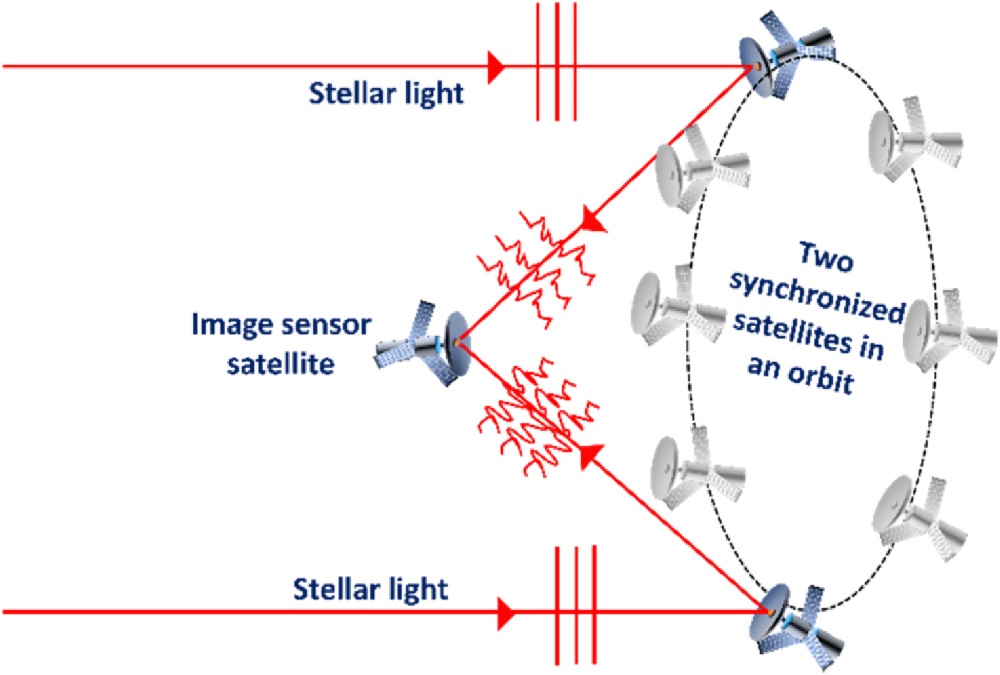It won’t be long before the James Webb Space Telescope is launched, an enormous and complex feat of engineering — but all one piece. That’s a good thing for now, but new research suggests that in the near future giant telescopes like the Webb might be replaced (or at least augmented) by swarms of tiny spacecraft working in concert.
One advance, from Ben-Gurion University in Israel, is a leap in the capabilities of what are called synthetic aperture systems. It’s a technique where a single small camera moves across a space, capturing images as it goes, and by very careful analysis of the data it collects, it can produce imagery like that created by a much larger camera — essentially synthesizing a bigger aperture.
As documented in a paper published today in Optica[1], the team leapfrogs existing methods in an interesting way. Two satellites move in synchrony around the edge of a circle, collecting data as they go and beaming it to a third stationary one; this circle describes the synthetic aperture the two cameras are creating.
“We found that you only need a small part of a telescope lens to obtain quality images,” explained BGU grad student Angika Bulbul, who led the research, in a news release[2]. “Even by using the perimeter aperture of a lens, as low as 0.43 percent, we managed to obtain similar image resolution compared to the full aperture area of mirror/lens-based imaging systems.”
In other words, they were basically able to get the results of a camera 50 times the size. That would be impressive anywhere, but up in space it’s especially important. Putting something as huge and complex as the Webb into orbit is an incredibly complicated and...
